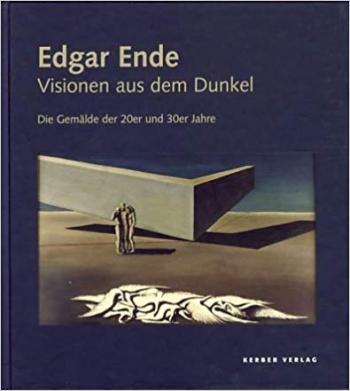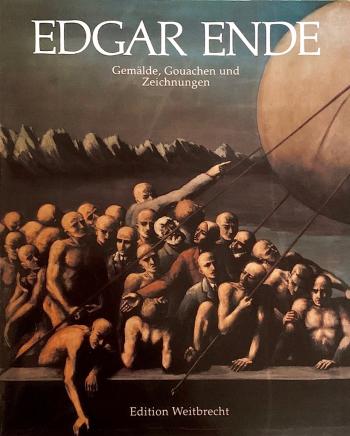
Literature

Edgar Ende: Melancholy and Promise
Edgar Ende (1901–1965) is considered one of the most important German representatives of surrealism in the first half of the 20th century. The father of the writer Michael Ende, who crafted a literary tribute to him in his 1983 novel Der Spiegel im Spiegel (Mirror in the Mirror), created his works in an almost somnambulistic manner, just as the Surrealists around André Breton had demanded at the beginning of the 1920s: For his work, he retreated into a dark chamber, where he recorded his ideas on small sketch pads with the help of a flashlight attached to a pencil, in order to later realize them as visually powerful paintings. The works he created in this way unfold an enigmatic, apocalyptic visual language in which space and time have lost their meaning. In the socially and politically turbulent decades of Europe from 1920 to 1965, Ende developed symbols of displacement and flight, of exposure and abandonment.
The catalog is an attempt to revive the forgotten work of Ende, who received international acclaim during his lifetime and was invited to the Venice Biennale twice. Extensive textual essays, biographical notes, and large-scale reproductions complement a detailed catalog of works including all paintings, drawings, gouaches, and prints.

The Archaeology of Darkness: Discussions about Art and the Work of Painter Edgar Ende)
The Archaeology of Darkness is the transcript of a rousing artist conversation. Michael Ende talks in an unprecedented way about his father's paintings and his own relationship to literature: In the mid-1980s, the two writers Jörg Krichbaum and Michael Ende meet to talk about an artist who was condemned as “degenerate” by the Nazis: Michael Ende’s father, Edgar Ende. Originally intended as a purely informational discussion, the exchange quickly develops into an exciting conversation about 20th century art and painting that ultimately lasts several days. What is the connection between the visionary paintings of the father and the magical world of the son, as in The Neverending Story? Do we already come across hints in Edgar Ende’s works of that which Michael Ende will later inspire readers all over the world?

The Omnipotence of Dreams. Edgar Ende 1901-1965
This monograph was published on the occasion of the exhibition Edgar Ende 1901-1965 - Der Träume Allmacht (The Omnipotence of Dreams) at the Museum Villa Rot and was edited by the Hoenes-Foundation and the publishing house Murken-Altrogge. Axel Hinrich Murken is a well-known researcher of Edgar Ende’s work. He was born in Gütersloh in 1937 and studied medicine, history and art history in Bonn from 1959 to 1973.

Edgar Ende. Visions from the Dark. The paintings of the 20s and 30s
Edgar Ende. Visions from the Dark was published in 1998 by Kerber Verlag Bielefeld. Volker Kinnius was the book’s editor.
“This book is a collection of the early paintings, the 43 color ones and in black and white the picture motifs preserved only on photographic glass plates…” Volker Kinnius.
With contributions by Volker Kinnius, Wieland Schmied and Andrea Wandschneider and the autobiographical account by Edgar Ende from 1949, published for the first time.

Edgar Ende 1901-1965. Paintings, Gouaches and Drawings
The catalog accompanying the exhibition of the same name of works by the painter Edgar Ende contains 242 illustrations, 48 of which are in color. Organizers: Städtische Galerie im Lenbachhaus Munich, Hamburger Kunsthalle Mannheim, Von der Heydt Museum of the City of Wuppertal.

Edgar Ende: The Painter of Spiritual Worlds. A Monograph
The first monograph on Edgar Ende is an attempt to give the life and work of the newly rediscovered painter the rehabilitation he deserves. The focus is not on affirmation, but on restoration. The series of essays, some critical, and each from a different angle, provides not only the historical context, but also the literary background in some detail, because the symbolic canon of signs and the peculiar substance of Edgar Ende’s work can be only be revealed in this fashion.